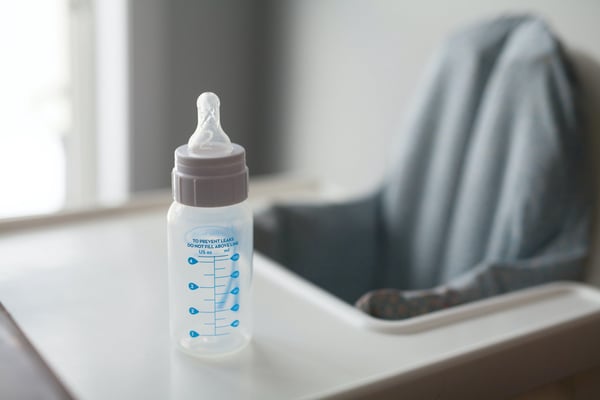What You Need to Know About Milk-Sharing During the Formula Shortage
By Kate Torgersen on May 23, 2022

In light of the formula shortage, more parents are turning to peer-to-peer milk sharing. The nutritional benefits of breast milk are unparalleled, but if you’re not careful, the risk of milk sharing may outweigh the benefits.
Unlike milk banks, which conduct extensive health screenings on donors and serve fragile and ill babies most in need of human milk, peer-to-peer milk sharing is informal and unregulated. So, while it might be more accessible to parents, it is not without risk.
Understanding what those risks are, as well as how parents might mitigate them, is critical if you’re considering milk sharing for the first time. We encourage all milk-sharing parents to follow Eats on Feets’ 4 Pillars of Safe Milk Sharing as well as to consult with their pediatrician before engaging in milk sharing.
We encourage all milk-sharing parents to follow Eats on Feets’ 4 Pillars of Safe Milk Sharing:
- Informed Choice. Do your research so that you understand all the benefits and risks involved in milk sharing so that you can make the best choice for you and your family.
- Donor Screening. Without a third party like a milk bank, it’s up to you to vet who you choose to receive milk from. Important factors to consider are health history and lifestyle choices. Do they suffer from any chronic or acute illnesses? Are they taking any medication contraindicated for breastfeeding? Do they use drugs or alcohol? And if your baby has any food sensitivities or allergies, you’ll want to ask your donor about their diet too.
- Safe handling. Find out what steps your breast milk donor follows to avoid contamination. For instance, in addition to hand washing, pump parts should be fully sanitized and expressed milk should be stored and transported at the appropriate temperature at all times.
- Home pasteurization. Yes, raw milk has more nutrients compared to pasteurized. However, there are easy ways to pasteurize donor milk at home to kill bacteria without eliminating all of the milk’s nutritional value.
Whether you’re new to milk sharing or have done it in the past, we encourage you to read the full 4 Pillars of Safe Milk Sharing report here.
Parents in need of breast milk should first reach out to a regional milk bank first to see if they are eligible. Many milk banks will require a prescription from your pediatrician.
To connect with families in need of donor breast milk, communities like Eats on Feets and Human Milk 4 Human Babies (HM4HB) have local chapters across the country.


